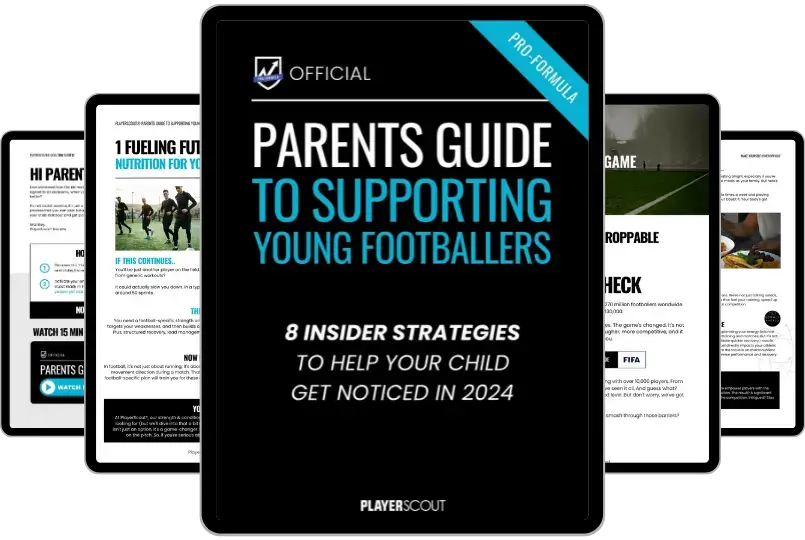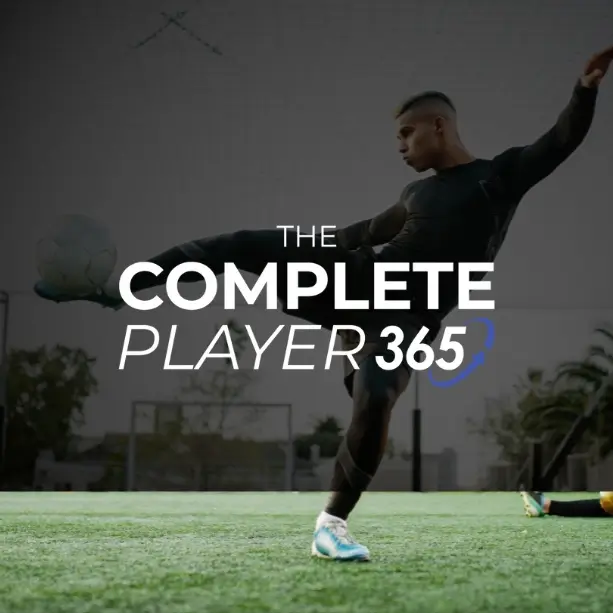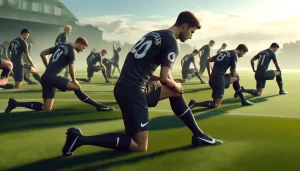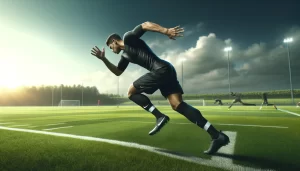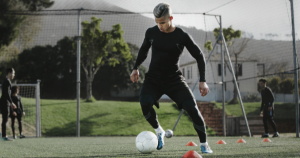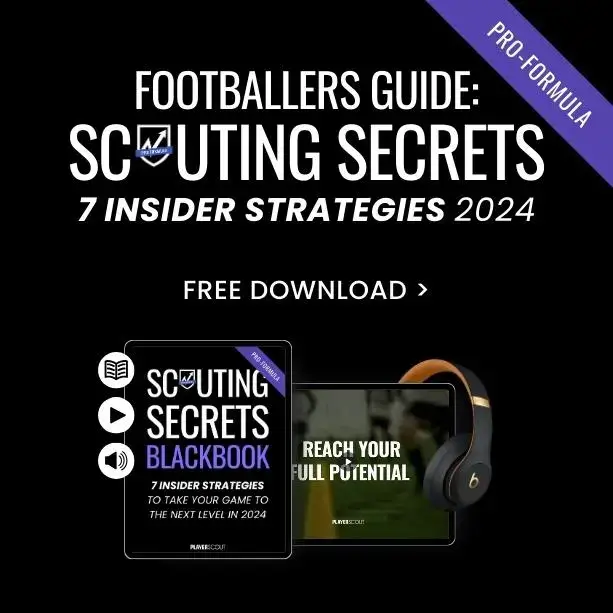Any footballer who has suffered from a hamstring injury knows how hard it can be to get back to playing again. Hamstring muscle injuries are a nightmare for all football physios. With 12% of all football injuries attributed to some kind of hamstring strain. And around 53% of those hamstring injuries involve the Bicep Femoris. A professional football team can expect at least 6 players per season out of a 25 man squad to suffer from a hamstring pull.
More than half of hamstring injuries happen whilst running. With the majority happening in the final minutes of each half.
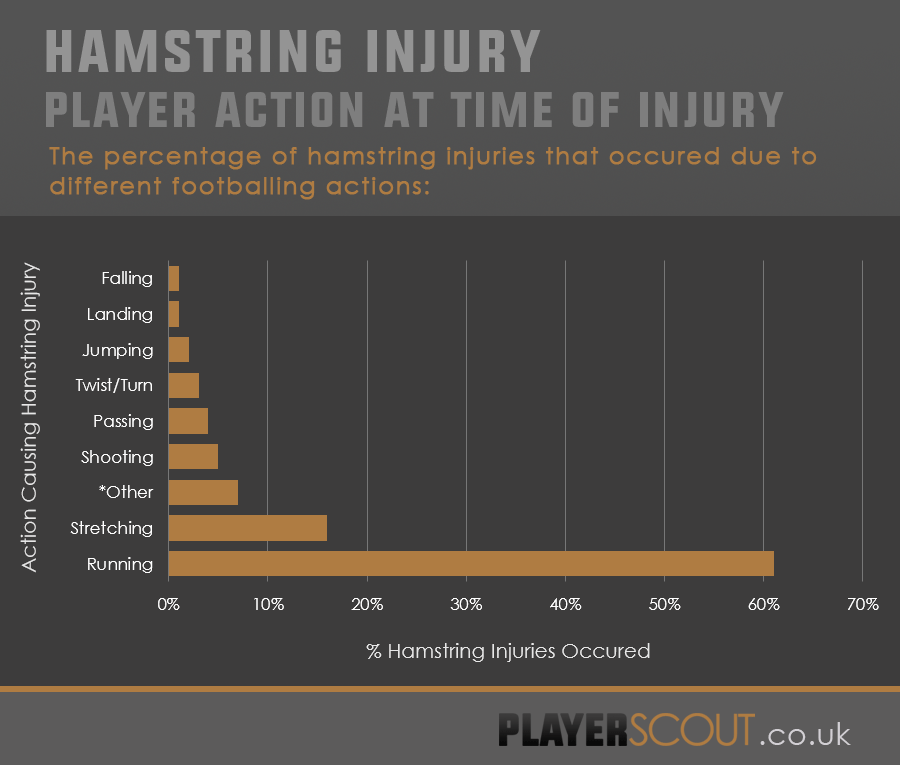
Players who have suffered from hamstring injuries in the past are 12% more likely to re-injure the hamstring muscle.
With the hamstring so integral to a football player’s fitness. We are going to delve into what the experts say about hamstring injuries. Firstly getting to know the anatomy of the muscle itself, before looking at the causes, prevention and rehab. To ensure you have the best chance of looking after the troublesome hamstrings.
[pullquote]“90 days and 15 matches missed per club per season due to hamstring injuries”
The Football Association Medical Research Programme[/pullquote]
The Anatomy of the Hamstring Muscles
Before we look at the main causes of hamstring injuries, it is important to understand the anatomy of the muscle. The hamstring actually refers to 3 different muscles that run down the back of the thigh.
The 3 muscles of the hamstring are:
- Biceps Femoris muscle
- The Semitendinosus muscle
- The Semimembranosus muscle
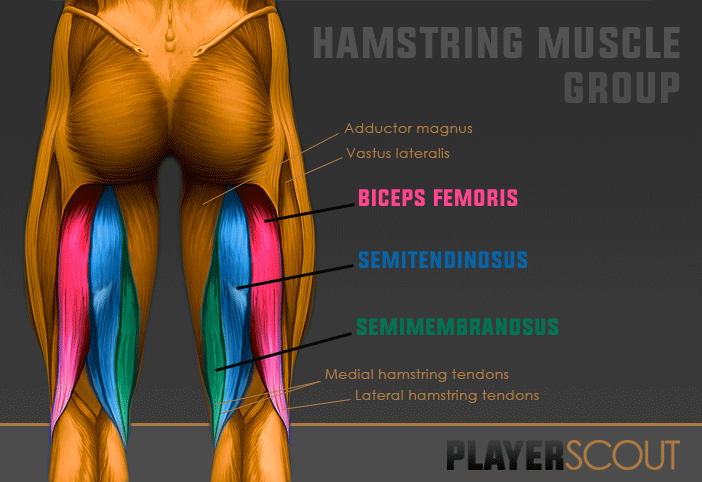
Theses muscles start at the Ischial Tuberosity (bottom of the pelvis). They extend over the knee joint and finish at the lower leg. These muscles connect to bones via the hamstring tendons.
The hamstring muscles are responsible for bending the knee and moving the upper leg backwards. The muscles also work together to rotate the knee and help us maintain a standing position. They assist the lower curvature of the spine when sitting to help our posture.
Football players depend on the hamstring muscles to allow for quick, explosive movements. These movements can put immense pressure on the hamstring muscles. The need to change direction immediately will also exert tension of these muscles.
Symptoms of a Pulled Hamstring (Hamstring Injury)
If you’ve ever had the misfortune of a hamstring tear, you know about the excruciating pain it can cause. But some minor hamstring injuries may go unnoticed.
With a minor hamstring strain you may feel some slight discomfort. However, a severe hamstring pull will cause a lot of pain and you may even struggle to stand or walk. There are different symptoms depending on how severe the injury to the muscle or tendon. The following grading system can identity the severity of the hamstring injury:
Grade 1 Hamstring Injury (Mild Pain)
Often caused as a result of overstretching the muscle or tendons. You may feel a slight ache or pull in the back of the thigh. Pain may not appear until you have stopped playing football. And often a player cannot remember when the injury occurred. In most cases you will not have any loss in flexibility or muscular strength. There will be an increase in tightness throughout the muscle whilst stretching. You may feel a sensations of pain when sitting on the damaged area, or walking up or down stairs.
Grade 1 hamstring injuries will have little or no swelling. They will also not affect a player’s walking patterns. Weight bearing activities may have slight discomfort depending on how severe the injury is.
Grade 2 Hamstring Injury (Moderate Pain)
This type of hamstring injury is caused as a result of a partial tear in the hamstring muscle. Players will feel a sharp immediate pain just below the glutes at time of injury.
The area will be sore to touch and pain will intensify when contracting the muscle or stretching the leg.
During a grade two hamstring injury, flexibility and muscular strength in reduced. You may also struggle to walk without limping and experience sudden twinges during activity. It can be hard to fully straighten the knee and also bending the knee against resistance can be painful. Within a week of the injury, the bleeding in the tissue may cause a large bruise below the affected area.
Grade 3 Hamstring Injury (Severe Pain)
This the most severe grade and is a result of a complete rupture of the hamstring muscle. You may see a large lump of muscle tissue directly above the position of the tear. The player will feel a sudden sharp pain on the back of the thigh. Along with a loud pop as the muscle ruptures. This will cause the player to leave the field of play immediately. Grade 3 symptoms are similar to grade 2, just more severe. This type of hamstring injury makes it impossible to walk or move the leg without pain. Again, as with the grade 2 hamstring injury a large bruise will appear within 2-3 days. Depending on the severity of the rupture, a player may need a surgical repair to fix the injury.
Hamstring muscle and tendon strains will cause swelling and inflammation around the injured area. Blood may also cause bruising behind the knee and calf areas as a result.
Hamstring Injury Recovery Times
Every hamstring injury is different. The pressure put on the hamstring during a football game mean it’s essential to not rush the recovery.
The generic recovery times for a hamstring injury are:
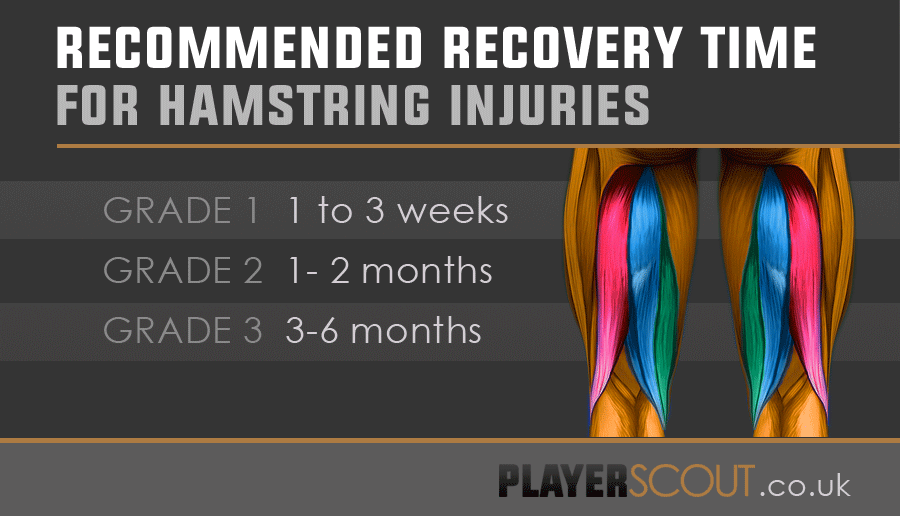
If you are unsure of the severity of your injury please consult a physiotherapists.
Main Causes of a Hamstring Injury in football
There are many factors that may cause a player to suffer from a hamstring injury. Below are some of the most common causes:
Muscle overload is the single most common cause for a pulled hamstring. This occurs when the muscles are at full stretch and a sudden load pushes the muscle passed it capabilities. These strains can also happen when the muscles contracts as it lengthens or shortens. This is known as an eccentric contraction.
When a football player sprints, the muscles performs eccentric contractions. The load leg pushes off the grass to move forward, and the leg is straightened. This lengthened hamstrings is loaded with body weight and force needed to move forward. The combination of load and force can overload the muscle causes it to strain or rupture.
The
tightness of a player’s hamstring can cause injury. Especially at the top level. Tightness in the muscles will increase the chance of hamstring pulls and strains.
A
muscular imbalance is another major cause of hamstring injury in football players. When one group of muscles is stronger than the opposing group of muscles, this imbalance can lead to a strain. This happens in the hamstring area, as the quadriceps (front of thigh) are usually a lot more powerful. Hamstrings also fatigue faster than the quadriceps during sprinting in football . This can result in a tear or strain.
Weak Muscles. Poorly conditioned muscles will strain due to not being able to withstand the stress put on them. As a muscle fatigue is its ability to absorb energy decreases. Making it more susceptible to injury.
Age plays a big part in football hamstring injuries. Football players aged 12-18 are prone to tears and ruptures. Because their muscles and bones grow at different rates. This causing an imbalance in the skeletal and muscular systems. Teenage muscles may grow slower than their bones. Meaning the bones will pull on the smaller tighter muscles. So any sudden movement, stretch, jump or load can rip the connective muscles from the bone.
Poor warm ups and stretching routine mean the muscles are not prepared for work. This causes them to buckle under the pressure of load, lengthening and force.
Main causes of Hamstring injuries in football:
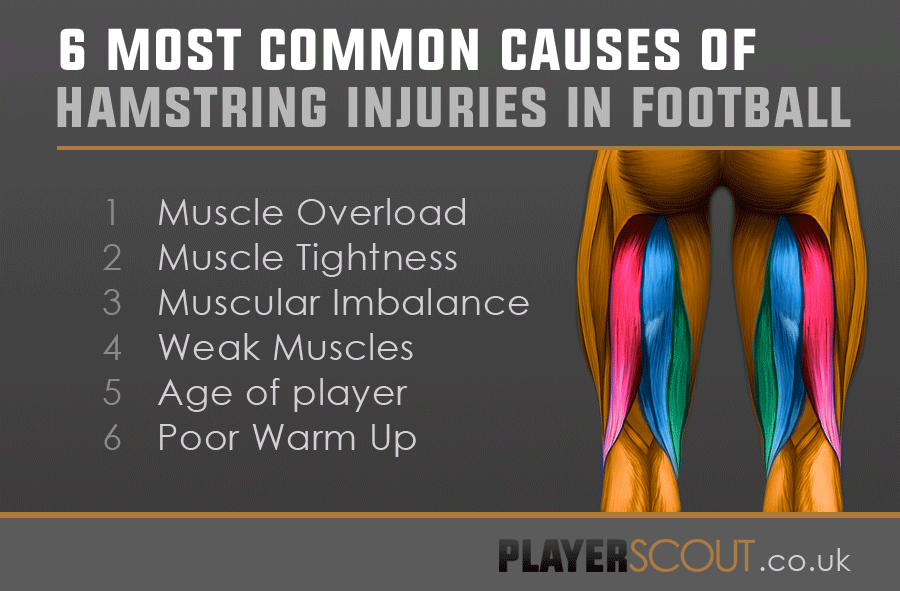
Hamstring Injury Prevention in Football
Now you are aware of the main causes of a hamstring strain. Lets look at some of the best way to prevent a hamstring injury:
Hamstring injury prevention: The 10 percent rule
When you are training, make sure not to increase too much each week. A 10% increase is the max you should raise your intensity, frequency and duration on a weekly basis. Any more than 10% will increase the likelihood of a pulled hamstring.
Hamstring injury prevention: Foam Roller
The foam roller is a must have for any football player (in fact anyone who plays sport). You should use this magic piece of foam on a daily basis. Rolling before and after football will lengthen the muscle fibers, release knots and increase blood flow. Roll slowly down your hamstring (a rate of one inch per second). When you reach a tight spot, hold on that position for 20-30 seconds, and breathe. This will increase the range of motion and allow for a deeper stretch.
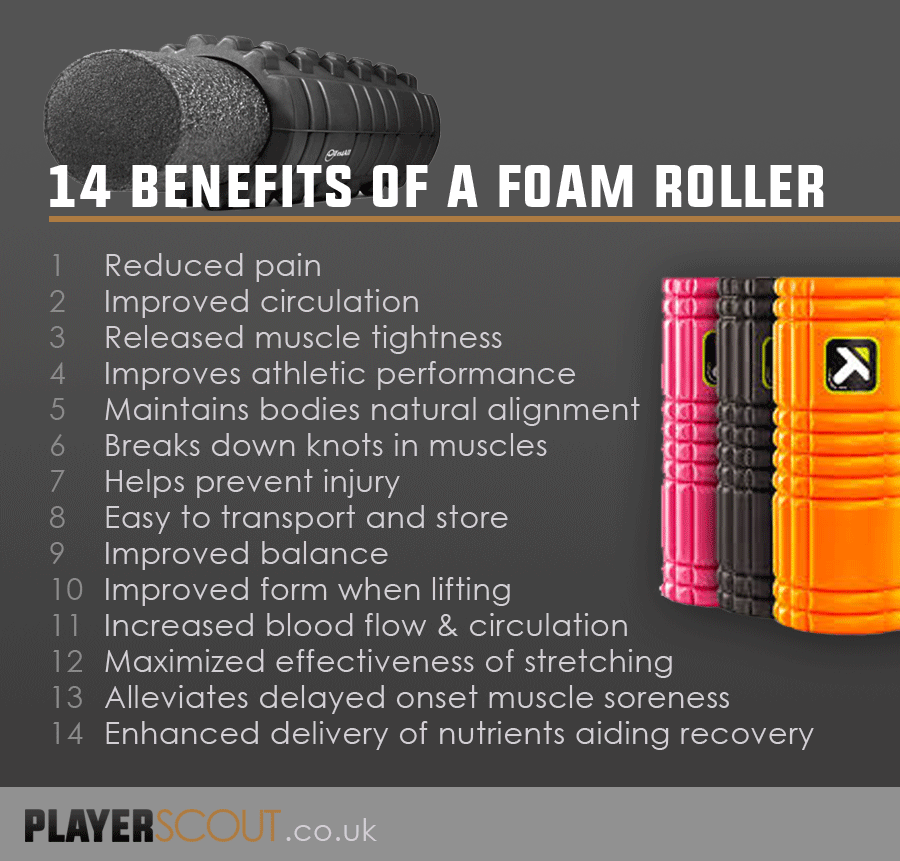
Hamstring injury prevention: If it’s tight, STOP
The human body has its own coping mechanisms, giving signals to the brain when something is not right. If you feel any tightness around the hamstring area, make sure you stop the exercise and rest. In some situations a sensation of tightness may appear before a tear happens. Use these warning signs to protect your muscles.
Hamstring injury prevention: In cold weather, add a longer warm up period!
Hamstrings are like elastic bands. The more you heat them up the more supple they become, allowing for a longer stretch. In cold weather, the hamstrings will need a more thorough warm up and stretching period.
Hamstring injury prevention: Isolated Hamstring Stretches
Flexibility can be increased by performing Active isolated stretching (AIS). Unlike traditional stretching AIS is only held for 2 seconds. Assisted by a rope, you can gradually pull the muscle further than it will usually allow. Reprogramming the brain and body to remember new ranges in motion. We suggest only doing Active isolated stretching once a week.
Hamstring injury prevention: Stretch hamstrings 3 times a day
A study by
Hartig (1999) discovered that performing 3 hamstring stretch routines per day decreased the chance of injury by 12.4%. Participants stretched before breakfast, lunch and dinner. Performing each stretch for 30 seconds and repeating 5 times.
Hamstring injury prevention: Add Hamstring strength training to pre-season training
A good pre-season training plan can be the difference between a good season and a great season. The right plan can also g0 someway towards an injury free season.
Askling’s (2002) study assessed the benefits of adding eccentric and concentric hamstring strength training to pre season regimes. Results showed a 53% decrease in the likelihood of hamstring strains throughout the season. These preseason exercises also increase max running speed.
Hamstring injury prevention: Isometric warm up once a week
Isometric stretching improves static passive flexibility. This is when a you contract without changing the length of the muscle group. You can use a the wall, a chair or another player to help with these stretches. This type of stretching can also range of motion and muscle strength in the stretched position. Weak hamstrings will reach a point where the fibers don’t have the strength to hold themselves in position. When you stretch a muscle, some fibers are lengthened and some will remain at rest. The more the stretch increases the more an individual fiber is stretched.
Isometric contraction whilst under stretch causes the resting fibers to stretch, supporting individual fibers.
Guidelines for Isometric Stretching
Isometric stretching can be harmful if the following guidelines are not adhered to:

Hamstring injury prevention: Fatigue
Fatigued muscles absorb less energy as non-fatigued muscles. Therefore, understanding the key periods in a game that hamstring injuries occur is very important. This will enable to you play with a slight air of caution, not over stretching and or over exerting your body.
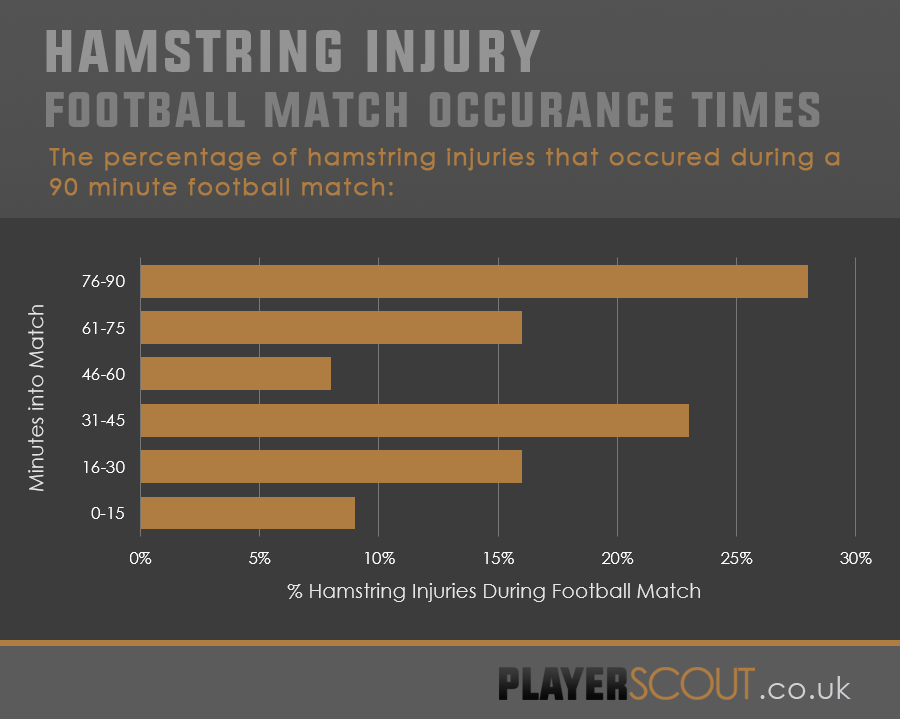
Hamstring injury prevention: Hamstring muscle imbalance
Often football players have a highly dominant leg, which may create an imbalance causing injury. You must ensure there is no (or little) imbalance between the right and left hamstrings. When you plan a weight training program, allow for equal reps and resistance on both legs. This imbalance will also relate to the hamstrings and the quadriceps strength. Expert recommend hamstrings to be at least half the strength of the quadriceps muscles.
Hamstring injury prevention: Increase strength to muscles around the hamstring
Muscular imbalance is not just related to the hamstrings and quadriceps. You must also improve the strength and flexibility of the connecting muscles. Stretch and strengthen the quadriceps, glutes, calf and lower back muscles. Correcting these muscular imbalances can stop hamstring injuries from occurring.
A personal trainer can also help to identify any muscular imbalance.
Hamstring injury prevention: Nutrition and Hydration
Keeping the body hydrated, alongside a well balanced diet is essential. Allowing for enough electrolytes will decrease the likelihood of muscle cramping. Overweight players are more likely to sustain hamstring injuries. As more force is exerted on the muscle. Sport nutritionists recommend supplements such as antioxidants can help against hamstring pulls and tears. Whilst also providing fuel to the muscles in the form of carbohydrates.
Hamstring injury prevention: Yoga and Pilates
Ryan Giggs holds the record for the highest number of appearances in Premier League history. He attributes his long career to a daily routine of Yoga. This increased the suppleness of his muscles. We’re not suggesting a daily Yoga routine (although that would be good). However, attending a class once a week will definitely increase hamstring strength and flexibility.
Hamstring injury prevention: Stretch after warm up and after cool down
Static and dynamic hamstring stretching after your warm up will decrease the chances of hamstring injury.
Is it also important to do a light cool down when you finish training or matches. This should include a gentle jog and a few hamstring stretching exercises. If performed straight after exercise, this will reduce the chance of cramping and injury.
Hamstring injury prevention: Hamstring support and compression shorts
An excellent way to prevent hamstring injuries is wearing compression shorts. These shorts increase warmth, support the muscle and the flow of blood. Lycra compression shorts are comfortable and promote better movement. We suggest these for matches and training outside. Neoprene compression shorts are better at retaining the heat. Although these are harder to move in, so more suitable for weight and resistance training.
Pulled Hamstring Treatment
As we mentioned earlier, all hamstring injuries have a different severity grade. This grade dictates the recovery time and treatment required.
Hamstring Injury treatment – Phase One
During the initial phase of a hamstring injury the PRICE treatment should be applied.
The PRICE principles are:
P stands for Protection: Ensure you protect the player and the injured area. To stop any further damage and discomfort to the leg.
R stands for Rest: Try to immobilize the leg, keeping it as still as possible to avoid unneeded movement. For grade 2-3 hamstring injuries a physio may provide you with crutches and leg brace.
I stands for Ice: Every 2 – 3 hours, apply an ice pack to the injured area. Holding this on for 15 to 20 minutes will help with swelling. Be sure not to put ice directly onto skin.
C stands for Compression: Apply a thigh support compression bandage to reduce the muscle bleeding. This will limit any movement and decrease swelling which can cause more problems. We suggest using, Tear-Lite Tape, Cohesive Bandage or Crepe Bandage.
E stands for Elevation: Elevate the injured leg so that it is above the heart. This will reduce the flow of blood to the injured area, and keep the swelling down.
The initial (acute) stage of a hamstring injury is around 3-4 days, depending on the injury severity. Use of anti-inflammatory creams or paracetamol can help relieve the pain and swelling. Stronger anti-inflammatory (ibuprofen) can also help .
The player should move onto phase 2 of the hamstring injury treatment once he is able to walk without pain.
Hamstring Injury treatment – Phase two
The duration of phase two treatment will depend on the severity of the injury.
Grade One hamstring strains 1-10 days
Grade two hamstring strains 2-3 weeks
Grade Three hamstring strain 3-8 weeks or more if needs surgery.
A player should now alternate hot and cold treatment. Twice a day for 18 minutes (6 x 2 mins hot 1 min cold). For hot treatment, use a gel pack that can be heated in the microwave.
During this phase a qualified physiotherapist would use either, laser, pulse, ultrasound shortwaves treatment. Ideally, this should be daily, although difficult and expensive for amateur players.
A light soft tissue massage can also be performed during this phase. Only for a short period, then gradually getting deeper over time. A few days recovery will be after this this message.
Once the player can jog for 5 minutes without any pain and withstand a deep massage without severe discomfort he can move onto the final phase.
Hamstring injury treatment final phase
The final phase consists of a player having a deep tissue massage every 3-4 days. This massage will need a few days recovery between sessions. You should also increase muscle temperature and blood flow through the hamstring by applying a heat pack once a day for 20 minutes.
Players should apply these techniques until they are back to full training.
Hamstring Injury Surgical Treatment
In the most severe cases a player may need to have surgery on the affected area. This is most common in a tendon avulsion injury. Occurring when the tendon has separated completely from the bone. Other cases where surgery is needed is when there is a complete tear in the muscle.
A surgeon will repair the tendon avulsion by first removing the scar tissue. Then by pulling the affected muscle back into the correct position. Finally attaching the tendon to bone with large staples or stitches. In the case of a complete tear, the muscle is stitched back together first.
Post surgery rehab involves keeping weight off of the affected leg, to allow the muscle to heal. Crutches will be provided, plus a leg brace may help protect the hamstring. Depending on how sever your initial injury, will dictate how long you need the crutches.
Once ready, you will start a physical therapy regime to improve flexibility and strength.
Severe operations such as Proximal hamstring reattachment will take at least 6 months. Whereas Distal hamstring reattachment will need around 3 months before sporting activity.
 Players who have suffered from hamstring injuries in the past are 12% more likely to re-injure the hamstring muscle.
With the hamstring so integral to a football player’s fitness. We are going to delve into what the experts say about hamstring injuries. Firstly getting to know the anatomy of the muscle itself, before looking at the causes, prevention and rehab. To ensure you have the best chance of looking after the troublesome hamstrings.
[pullquote]“90 days and 15 matches missed per club per season due to hamstring injuries”
The Football Association Medical Research Programme[/pullquote]
Players who have suffered from hamstring injuries in the past are 12% more likely to re-injure the hamstring muscle.
With the hamstring so integral to a football player’s fitness. We are going to delve into what the experts say about hamstring injuries. Firstly getting to know the anatomy of the muscle itself, before looking at the causes, prevention and rehab. To ensure you have the best chance of looking after the troublesome hamstrings.
[pullquote]“90 days and 15 matches missed per club per season due to hamstring injuries”
The Football Association Medical Research Programme[/pullquote]
 Theses muscles start at the Ischial Tuberosity (bottom of the pelvis). They extend over the knee joint and finish at the lower leg. These muscles connect to bones via the hamstring tendons.
The hamstring muscles are responsible for bending the knee and moving the upper leg backwards. The muscles also work together to rotate the knee and help us maintain a standing position. They assist the lower curvature of the spine when sitting to help our posture.
Football players depend on the hamstring muscles to allow for quick, explosive movements. These movements can put immense pressure on the hamstring muscles. The need to change direction immediately will also exert tension of these muscles.
Theses muscles start at the Ischial Tuberosity (bottom of the pelvis). They extend over the knee joint and finish at the lower leg. These muscles connect to bones via the hamstring tendons.
The hamstring muscles are responsible for bending the knee and moving the upper leg backwards. The muscles also work together to rotate the knee and help us maintain a standing position. They assist the lower curvature of the spine when sitting to help our posture.
Football players depend on the hamstring muscles to allow for quick, explosive movements. These movements can put immense pressure on the hamstring muscles. The need to change direction immediately will also exert tension of these muscles.
 If you are unsure of the severity of your injury please consult a physiotherapists.
If you are unsure of the severity of your injury please consult a physiotherapists.







